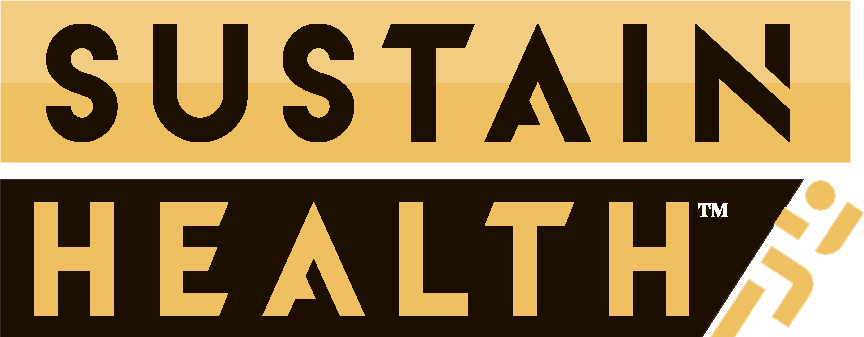Have you ever been told that your pain is just in your head? Or wondered why you seem to have more pain than others your age? Or maybe you’ve wondered if the aches you feel are just a normal part of life, a part of getting older.
How do you know when your pain is serious? Who do you go to? Maybe you’ve already tried your GP and nothing much apart from a prescription for painkillers has happened? What next?
National Pain Awareness Month in September unites Pain Consultants and Pain Professionals around the world as they work to highlight issues around chronic pain.
We spoke with Ben Mitchell who is a Chronic Pain Life Coach from Poole, Dorset, and as a sufferer of chronic pain himself, knows exactly what support people need and why National Pain Awareness Month is so important.

“The definition of chronic pain is ‘a persistent pain that lasts longer than 12 weeks, or beyond the natural healing time’.
For most chronic pain sufferers, we’re talking about years rather than weeks of pain, many experiencing pain on a daily basis that impacts their normal lives.
This can be really difficult for non-chronic pain sufferers to relate to. Especially as a lot of pain sufferers can look ‘normal’ on the outside. In fact, a lot of my clients look especially fit and healthy and not like they’re in pain at all.
I know this from first-hand experience too, at 33 I was diagnosed with a condition called Ankylosing Spondylitis (AS), colloquially known as Spinal Arthritis. It’s a genetic condition, not caused by lifestyle choices so it’s indiscriminate in who it affects. I was young, fit, and healthy, I didn’t look like someone who had Spinal Arthritis.
By the time of my diagnosis, I’d already been experiencing significant pain on a daily basis. And I’d spent a lot of time during those years blaming myself, or wondering if it was all in my head, it was a very disconcerting and worrying time.
It was a huge relief to have a diagnosis, to know that it wasn’t my fault, and it did exist. And from there, with my diagnosis, I could then work on living with the condition and aiming to reduce my pain levels.
When I say I’ve done a lot of research, I mean a lot! I was borderline obsessive; I’ve looked into and tested diets, supplements, natural remedies, pharmaceutical solutions, physical and mental therapies, I’ve read a library of books and spent hours online. I also made a lot of life-changing decisions including a change of career.
When you get diagnosed with an incurable disease it makes you re-evaluate your life, what’s important and what do I want to do with my life? Thanks to all the time I’d invested, I now know how to best manage my own chronic pain and with the knowledge that I’ve accumulated, I wanted to help others which is why I became a Chronic Pain Life Coach.
As it’s National Pain Awareness Month, I want to go right back to the beginning, when people first experience chronic pain. I hope I can help sufferers to understand more about pain and how they can manage it effectively both mentally and physically.
I hope my guide on understanding pain can help answer some of these questions and support people who need it.
Understanding Pain: When It’s Not Just in Your Head
Pain comes in many forms—acute, chronic, physical, and emotional. Acute pain is usually sharp and sudden, often a direct response to injury. It’s your body’s way of saying, “Something’s wrong, take care of me!” Chronic pain, however, is different. It lingers, often without a clear cause, and can be debilitating over time.
Unfortunately, chronic pain is frequently dismissed by others, sometimes even by healthcare professionals, leading to feelings of frustration and isolation.
So, how can you tell if your pain is real and not just something to brush off? Here are a few key indicators:
- Duration: If your pain persists for weeks, months, or even longer without significant relief, it’s time to take it seriously.
- Interference: Is your pain affecting your daily activities, work, or sleep? If it’s making it difficult to live your life as you normally would, it’s not something to ignore.
- Escalation: Pay attention if your pain is getting worse over time or if it starts to spread to other areas of your body.
Most importantly, remember that your experience matters. You know your body better than anyone else. If something feels off, don’t be afraid to acknowledge it and seek answers.
When to Push for a Professional Opinion
Listening to your body is the first step, but knowing when to seek professional help is equally important. Self-advocacy is key in this process. Trust your instincts—if you feel like something isn’t right, it’s worth exploring further.
Certain red flags should prompt immediate medical attention:
- Unexplained weight loss
- Fever that doesn’t subside
- Severe pain that doesn’t respond to standard treatments
If you’re experiencing any of these symptoms, don’t wait – reach out to a healthcare professional.
One practical step you can take before visiting a doctor is to start a pain journal. Documenting your symptoms, frequency, duration, triggers, and what helps relieve the pain can be incredibly helpful when communicating with healthcare professionals. It provides a clear record of your experience and can help in getting a more accurate diagnosis.
It’s also important to break the stigma around seeking help for pain. Conditions like fibromyalgia, chronic fatigue syndrome, and other invisible illnesses are often misunderstood or dismissed. But your pain is valid, and seeking help is a sign of strength, not weakness.
Where to Go and Who to Trust
Navigating the healthcare system can be overwhelming, especially when you’re in pain. Choosing the right healthcare professional is crucial. Here’s a quick guide:
- Primary Care Physicians: Often the first point of contact, they can refer you to specialists if needed.
- Pain Specialists: Doctors who focus specifically on diagnosing and treating chronic pain.
- Rheumatologists: Specialists in autoimmune and inflammatory conditions, such as arthritis.
- Neurologists: Experts in the nervous system, helpful if your pain is related to nerve issues.
If you feel like your concerns are not being taken seriously, you should always look to seek a second or even third opinion. Your health is too important to settle for anything less than thorough, compassionate care.
The Benefits of Pushing Through and Getting a Diagnosis
So, why is it so important to push for a diagnosis?
- Peace of Mind: A diagnosis can provide validation. It confirms that your pain is real and that there’s a reason behind it.
- Access to Treatment: Once you know what’s causing your pain, you can explore targeted treatments and therapies. Taking the right medication for your condition can significantly improve your quality of life.
- Mental Health Benefits: Understanding your condition can reduce the anxiety and depression that often accompany chronic pain. It’s easier to face something when you know what it is.
- Empowerment: Knowledge is power. Understanding your condition allows you to manage it better, plan for the future, and advocate for yourself more effectively.
If you’re living with pain, it’s okay to seek help. No one should have to suffer in silence or dismiss their pain as “just part of life” without a proper evaluation. Trust yourself, listen to your body, and don’t be afraid to push for the answers you deserve.
If this is you, please take the first step start by making an appointment with your doctor or another healthcare professional. Be proactive in keeping a symptom journal, or reach out to a support group. You don’t have to go through this alone, and there’s power in knowing what you’re dealing with.
For more helpful advice on living with chronic pain, or to find out more about Ben and Chronic Life Coaching, visit https://yourlife-matters.co.uk/





